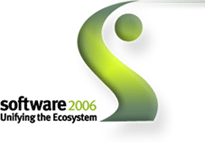 I’ll be attending “The must-attend software event of the year”, Software 2006, organized by the Sand Hill Group.
I’ll be attending “The must-attend software event of the year”, Software 2006, organized by the Sand Hill Group.
The 2,500 participants meet industry leaders on April 4-5th in Santa Clara, CA.
I hope to blog from there, although it’s more likely that I only get to do it after the event. I also hope to meet many of my readers. If you’ll be there and would like to meet, drop me a note.
Tags: software2006, Sandhill.com, Sand Hill Group




Recent Comments